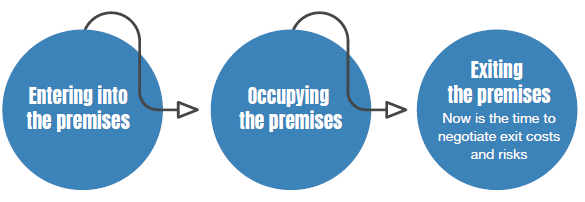
5 minute read
READY, SET, OPEN!
Nine steps to finding premises and getting open for business.
So, you’ve been approved as a franchisee? Congratulations! The next hurdle on your journey to becoming a successful franchisee often involves finding suitable premises. The importance of this part of the process can sometimes be overlooked, writes property leasing expert Marcus Bosch.
Finding premises and getting open for business can be more complicated than you think. Here’s a handy nine-step checklist:
1. Understand your franchisor requirements
Good franchisors will have:
Location, premises and fitout guidelines / requirements to follow
Rental ranges and fitout cost ranges
Visiting franchise stores in neighbouring territories will give you a feel for what makes an ideal location.
2. Define your premises brief
Based on franchisor requirements and site visits, summarise your requirements into a single one-page premises brief. This can be circulated to real estate agents, property managers and third parties.
Your brief should include:
Overview of the franchise business – show you are a low-risk operator
The territory you need to operate within
Ideal location criteria – eg. target demographics, locality, nearby attractions, competitor proximity, visibility, access, zoning
Ideal premises criteria – eg. size, layout, condition, business specific needs such as ventilation, rubbish, storage, delivery access
Ideal infrastructure criteria – e.g. power / water / waste needs
3. Market scan to identify potential premises
Think of the pool of possible premises as an iceberg; the available premises are above the waterline. The premises that could become available are below the waterline.
Ideally, you’ll scan for premises above and below the waterline. Search for premises available for lease on public websites, then dive below the waterline by talking to agents, property managers, developers, accountants and solicitors to identify premises coming to market.
You should then have a list of available premises to consider.
4. Qualify and shortlist potential premises
Qualify your list against the premises brief and franchisor requirements. Rank them in order of preference. Shortlist three qualified premises.
Next, do market research, cost estimate and lease negotiation. If time is tight, do this on just your top two shortlisted premises.
5. Do your market research
Before commencing any lease negotiations, it’s important to understand what the market lease terms are, so you have a baseline from which to negotiate a better deal. Consider: What are the rental rates? What are the incentives? What terms are on offer? How motivated are the landlords?
If you are working with a real estate agent, remember they are incentivised to maximise the asking rent and expedite the process.
6. Think in terms of lease lifecycle: Entry, Occupation, Exit
Your lease is your second largest business cost. Before you begin lease negotiations, take time to calculate likely costs and risks of:

7. Negotiate the lease
Negotiating a lease deal can be broken down into several stages:
Ask for a survey plan, or make the deal subject to a survey plan, which defines the premises area. In paying rent on a per square metre basis, you need to ensure it’s accurate. (Premises area can be overstated.)
Prepare a summary of your proposed commercial lease terms with the agent / landlord – incorporating insights gained from steps 5-6, above
Negotiate and agree commercial lease terms
Document agreed lease terms in a conditional Agreement to Lease
It’s important to mitigate risks. Make your Agreement to Lease conditional on risk factors such as:
Obtaining franchisor approval of the premises
Landlord’s approval of your fitout & signage
Obtaining a building consent (if required)
Validating your fitout costs
Meeting or upgrading infrastructure services – this can be expensive
Obtaining finance
When negotiating, it’s important to always retain the ability to walk away from a deal if you cannot agree on terms or satisfy conditions. Having a shortlist of three qualified premises (from step 4 above) to fall back on, helps prevent a ‘sunk cost bias’ on a particular premises.
If you do walk away from a lease negotiation, then repeat steps 5-7 for your second preferred premises.
8. Design, consent and fitout
Depending on the nature of the business and the fitout required, you may need to obtain a design then submit that, with proposed use, for building consent. A resource consent may also be required, depending on the building’s zoning and your intended use.
Once you have obtained consents and have an unconditional Agreement to Lease, you will need to engage contractors to fitout your premises.
Lastly, following the final building inspection, you will need to obtain a Certificate of Public Use to enable you to open to the public, while you await the issue of the Code of Compliance Certificate.
Congratulations – you are now open and trading!
9. Document your Deed of Lease
In the excitement of opening for business, don’t forget to organise your Deed of Lease for the premises.
Ideally, your lease should include:
Survey plan - defining the premises area
Premises condition – state the premises need to be in on lease expiry
Landlord fitout, fixtures and fittings
Tenant fitout, fixtures and fittings –these should be excluded from any market rental assessment.
Working through this nine step process will help you avoid some of the potential pitfalls in finding and leasing premises.
About the author
Marcus Bosch is a lease expert specialising in assisting franchises find premises, negotiate leases and resolve lease issues. He is managing director at Proactive Property Group. For more information contact Marcus on 021 024 76664 or marcus@proactivegroup.co.nz










